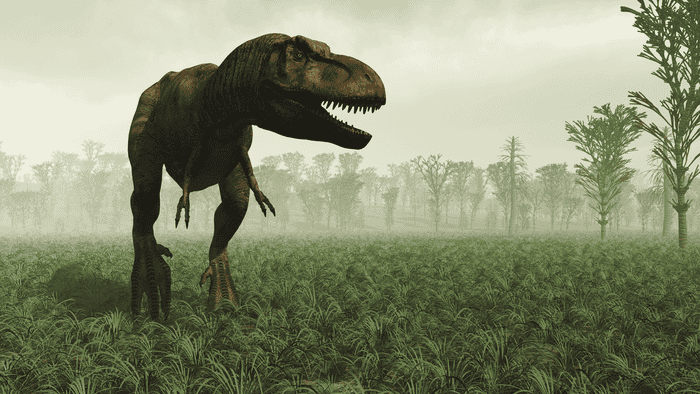
Thanks to the discovery of fossilized skull fragments in southern Alberta, Canada, we now know of a new member of the tyrannosaurus rex family. The name of that newly discovered lizard? Reaper of death (well, technically Thanatotheristes degrootorum, but "Reaper of Death" is what it means in Greek). See, that's what happens when you don't copyright your high school band names.
Those skull fragments were reportedly found by farmer/palaeontology enthusiast John De Groot, according to the building where they'll be displayed later this year, the Royal Tyrrell Museum. Why would they lie?
This find marks the first time in five decades that a new tyrannosaur has been been unearthed in Canada.
Researchers believe that the Reaper roamed the planet 2.5 million years prior to the T-Rex. That would mean that it was a (possibly the) big cheese on North America about 79.5 million years ago.
The newly found apex predator is said to be able to get as long as 26-to-30 feet, with adults able to weigh two tons. For comparison's sake, the T-Rex could hit 40 feet and 9 tons on those same measurements.
CNN adds that the recently discovered dino's name is a combo of Thanatos (the Greek god of death) with theristes (someone who reaps or harvests). That second part isn't coincidental, as it ties into the profession of the man who came across it.
In fact, De Groot says he found the fossil while hiking in Alberta, which is a hotbed for dinosaur bones.
A study published in Monday's Cretaceous Research says that the fossils had unique identifiers that helped scientists conclude it was an undiscovered species.
"Thanatotheristes can be distinguished from all other tyrannosaurs by numerous characteristics of the skull, but the most prominent are vertical ridges that run the length of the upper jaw," said that study's lead author, Jared Voris.
Prior to the recent find, the last unique tyrannosaur to be uncovered in Canada was Daspletosaurus, which finally had its moment when it was located in 1970.
